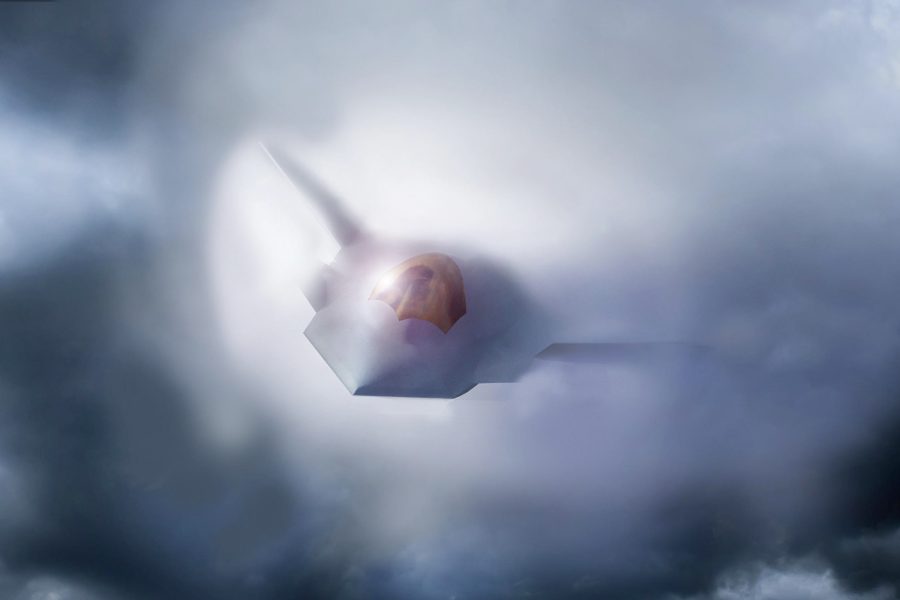The F-47 fighter will be run differently than previous fighter programs and share the same mission systems architecture as the Collaborative Combat Aircraft, Air Force Chief of Staff Gen. David Allvin told the Senate Armed Services Committee. That means advances in one will fuel advances in the other.
In a wide-ranging hearing, Allvin emphasized the continued need to acquire the E-7 Wedgetail as a successor to the aging E-3 AWACS; the burden on USAF of maintaining excess infrastructure; and reluctance to commit to acquiring the newest versions of the F-16 fighter.
The Air Force contract with Boeing to develop and build the F-47 Next-Generation Air Dominance fighter gives USAF more control than with previous fighter programs, Allvin told Sen. Roger Wicker (R-Miss.), the committee chairman. “We have more ownership of the tech base,” he explained. “We own the mission systems.”
Government ownership will make it easier for companies besides Boeing to compete to upgrade the aircraft, he said. Updates can be rolled out “at the speed of software, not hardware,” Allvin said. This is in contrast to the F-35 experience, in which Lockheed Martin owns the intellectual property, giving it a lock on future work, something Allvin said he “doesn’t want to repeat.”
“My sense is that we’re going to be able to be more agile, and as more disruptive technology comes into play, to be able to develop more advanced systems,” Allvin said. Once developed, advances can be added “not only into the F-47 but into those two Collaborative Combat Aircraft,” Anduril’s YFQ-42A and General Atomics’ YFQ-44A.
“They’re all going to be under the same mission systems architecture,” Allvin said. “So we won’t just be upgrading one platform, we’ll be upgrading a system. … The American taxpayer will get more combat capability out of their money.”
Wedgetail
How the Air Force helps its advanced fighters identify and destroy moving targets came up as Allvin responded to a question from Sen. Mazie Hirono (D-Hawaii). The E-3 Sentry AWACS, the aircraft now performing the moving target indicator mission, is quickly aging out of the fleet. The E-3s are “self-divesting, it’s really getting old,” Allvin said. The Air Force will outfit at least two E-7 Wedgetail prototypes as a stopgap measure and cannot assume targeting can be handled exclusively with space-based assets.
“The E-7 offers advantages that the E-3 does not have, with respect to enhanced capability, range and some of the other capabilities,” Allvin said. “So the ability to maintain a viable battle management, especially in the Indo-Pacific, and some redundancy between the air and space layers—as the space layer matures—is going to be very important.”
Could the E-7 be bypassed in favor of a space-based system? Hirono wanted to know. “My understanding is that the administration may still be considering whether to cancel the E-7 altogether in favor of a space based system,” she said. “But that is going to take time, and I think that you need to have this replacement for aircraft that are over 50 years old.”
Allvin agreed. “I do believe that we need to maintain that viability,” he said. But he stopped short of any disagreement with his civilian leadership. “I don’t want to get ahead of where the administration is on this budget.”
Infrastructure
Allvin expressed frustration with the burden imposed on the Air Force by having 23 percent more buildings and about 60 percent more roads, runway, and property than it needs. In all, he said, the Air Force is carrying 30 percent excess capacity.
“It costs us an additional maybe $1.5 billion a year just to be able to maintain that,” he said. Closing bases, though, is a huge political hurdle, one Congress has not addressed significantly since 2011, when it approved the last in a series of Base Realignment and Closure (BRAC) efforts.
New F-16s?
Sen. Tom Cotton (R-Ark.) pressed Allvin over whether existing plans to buy F-35s and F-15EXs are sufficient to restore the Air Force’s fighting edge, and whether new-production “Block 80” F-16s—a notional variant—would be valuable. Allvin responded that he believed the Lockheed Martin F-16 Block 70 production line in Greenville, S.C., is already near full capacity producing fighters for export.
Would CCAs be a useful substitute for crewed aircraft? Cotton asked.
Allvin demurred. “My assessment, as of right now,” is that CCAs “would not be a good one-for-one replacement” for crewed fighters, he said. Rather, they will greatly augment the 5th-generation fighter fleet, “even before the F-47 gets fielded.” CCAs, he added, “will help us deliver more combat capability at a better cost point.”
Cotton asked if the Air Force could use Block 70 F-16s if new aircraft could be diverted from foreign military sales; the CSAF declined to answer until later.
“I don’t want to give you a yes or no, because specifically understanding what the export variant can and can’t do, and any sort of adjustments we would have to make” to integrate them “with our US-built fighters,” is central to the question. “I would need to see what the integration opportunities and costs would be before I could give you a good answer.”
Cotton asked him to do so, given that the bulk of the USAF F-16 fleet is aging and that new F-16s could help answer Allvin’s call for “more Air Force.” Allvin remained cautious: New F-16s would have to compete for funds with nuclear modernization, munitions, funding to support Agile Combat Employment, and numerous other priorities, he said.


